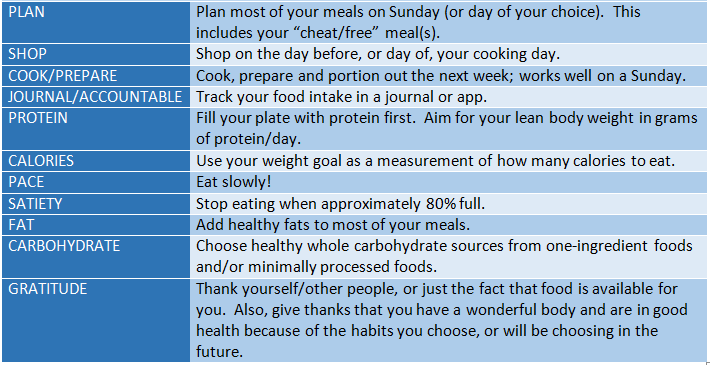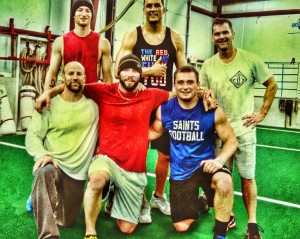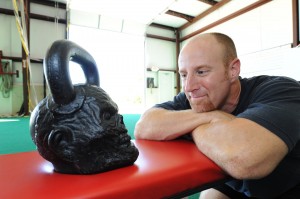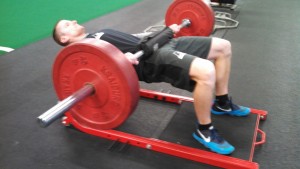Here are a few opinions on the subject: The first one is by Burpee fanatic, Chas Brown, resident all-around good guy from ASF; the second is from a popular website called T-Nation; the third is from Tony Poggiali.
Chas Brown:
If you review the ASF Core Values, you will see the very first value is: Seek Continuous Improvement – Good Enough isn’t Good Enough.
With that in mind it is that time of year where many of us will make New Year’s Resolutions!
In case you don’t know: A New Year’s resolution is a tradition in which a person makes a promise to do an act of self-improvement or something slightly nice, such as opening doors for people beginning from New Year’s Day.
The practice of Resolutions has religious origins: Babylonians made promises to their gods at the start of each year that they would return borrowed objects and pay their debts. The Romans began each year by making promises to the god Janus, for whom the month of January is named. In the Medieval era, the knights took the “peacock vow” at the end of the Christmas season each year to re-affirm their commitment to chivalry.
Popular goals include resolutions to:
Improve physical well-being: eat healthy food, lose weight, exercise more, eat better, drink less alcohol, quit smoking, stop biting nails, get rid of old bad habits.
Improve mental well-being: think positive, laugh more often, enjoy life.
Improve finances: get out of debt, save money, make small investments.
Improve career: perform better at current job, get a better job, establish own business.
Improve self: become more organized, reduce stress, be less grumpy, manage time, be more independent, perhaps watch less television, play fewer sitting-down video games.
Volunteer to help others, practice life skills, use civic virtue, give to charity, volunteer to work part-time in a charity organization.
The Success Rate is for resolutions are low. The most common reason for participants failing their New Years’ Resolutions was setting unrealistic goals (35%), while 33% didn’t keep track of their progress and a further 23% forgot about it. A 2007 study by Richard Wiseman from the University of Bristol involving 3,000 people showed that 88% of those who set New Year resolutions fail, despite the fact that 52% of the study’s participants were confident of success at the beginning.
So how do we continue to seek continuous improvement if we are not very good at keeping resolutions? The Center for Well-Being conducted a massive study on the topic of daily actions important in well-being:
Connect…..
With the people around you. With family, friends, colleagues and
neighbors. At home, work, school or in your local community. Think of
these as the cornerstones of your life and invest time in developing them.
Building these connections will support and enrich you every day.
Be active……
Go for a walk or run. Step outside. Cycle. Play a game. Garden. Dance.
Exercising makes you feel good. Most importantly, discover a physical
activity you enjoy and that suits your level of mobility and fitness.
Take Notice…..
Be curious. Catch sight of the beautiful. Remark on the unusual. Notice the
changing seasons. Savor the moment, whether you are walking to work,
eating lunch or talking to friends. Be aware of the world around you and
what you are feeling. Reflecting on your experiences will help you
appreciate what matters to you.
Keep Learning….
Try something new. Rediscover an old interest. Sign up for that course.
Take on a different responsibility at work. Fix a bike. Learn to play an
Instrument or how to cook your favorite food. Set a challenge you will enjoy
Achieving. Learning new things will make you more confident as well as
being fun.
Give…..
Do something nice for a friend, or a stranger. Thank someone. Smile.
Volunteer your time. Join a community group. Look out, as well as in.
Seeing yourself, and your happiness, linked to the wider community can be
incredibly rewarding and creates connections with the people around you.
Source: Wikipedia, Center for Well-Being, and Me
****************************************************************************************
Chris Shugart of T-Nation says….
The typical advice about goal setting goes something like this: Set a goal and then tell lots of people about it. That will keep you accountable. The problem? It seldom works. In fact, it can have the opposite effect.
Why Talking About Your Goals Doesn’t Work
Multiple psychological studies, some going back as far as 1927, back this up. But here’s the gist: When you tell someone about your goal, you get a sense of satisfaction and even a little tingling sense of achievement. Your mind becomes somewhat content, as if you’ve already achieved that goal. Announcing the goal makes you feel closer to achieving it even though you haven’t actually done any work yet.
Psychologists call this a problem of “social reality” or “social acknowledgment.” You’ve identified with an end goal  and get a little smug about the thing you haven’t done yet. Now you’re less likely to do the work. This is also known as having a premature sense of completeness.
and get a little smug about the thing you haven’t done yet. Now you’re less likely to do the work. This is also known as having a premature sense of completeness.
Imagine the guy with the Tapout shirt telling everyone he’s going to be an MMA champ. Makes him feel like a badass. He’s already adopted that identity in his mind, and well, he’s got the T-shirt! Problem is, he’s never even trained for it, doesn’t know even one martial art much less a mixed variety, and he’s horribly out of shape. Socially and mentally he’s a mixed martial artist. In reality, he’s just a fan with delusions of grandeur and bad taste in T-shirts.
A Better Method
First, you can keep your mouth shut. Resist the urge to talk about your goal. Delay the sense of gratification. Be the person that achieves cool things, not the person who talks about achieving cool things and never does. Or do as Derek Sivers says: go ahead and talk about your goal but do so in way that doesn’t give you much satisfaction. Two examples:
My goal is to stop drinking sodas. It’s going to suck.
My goal is to bench press 400 pounds. It’ll take a year or more of intense effort and smart programming.
Or Maybe Other People Just Suck
Another problem: people are assholes. Or at least a lot of them are. They’re dealing with their own inner whirlwind of doubts and insecurities, and when someone decides to do something great, well, that hurts their wittle feelings.
They usually won’t blatantly discourage your aspirations, but they will do it in more subtle ways: little comments or small actions that cause you to waver. Tell your coworker your goal is to lose ten pounds and sure enough she’ll shove a cookie in your face the next week because, “You deserve a reward.” The bitch.
Better to keep your mouth closed, do your thing, and celebrate your actual achievements, not your make-believe good intentions.
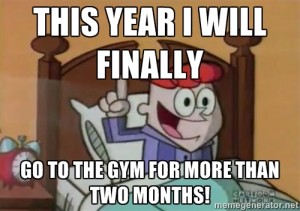
********************************************************************************************
Tony Poggiali opines…
I have written goals off and on for the better part of three decades. I can’t unequivocally say that writing them down had lead to a better year any more than NOT writing down lead to a bad year. Ambition comes from different sources, some written, some thought about, some at the beginning of a year, some in the middle of traffic. The point is striving toward something that leads to something! Just because you feel warm and fuzzy about your bucket list for 2016 doesn’t mean anything unless you go forth and produce. However, it may be the kick in the ass you need when you take time to write specific, tangible, and realistic goals/accomplishments/objectives and refer to them often to track your progress.
I don’t have a strong opinion either way as different people are wired to be “writers” and others “thinkers” or some combination of both. Whatever mode you choose, embrace it and make it mean something!
What are your thoughts for next year? Write down goals? Keep them to yourself? Tell everyone so you are accountable?
PS The Challenge is right the corner, so maybe that is the kickstart you need!



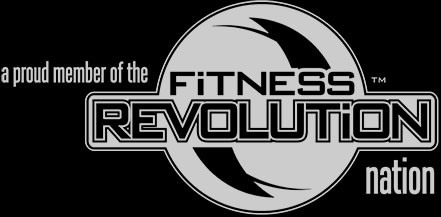
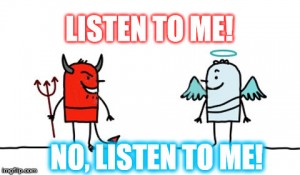 when faced with difficult life choices. When your actions are aligned with your values, life is generally pretty good. Overall, you are a much happier and content person. When your actions and behaviors get out of whack with your core values, things can go wrong. Unhappiness is usually the result of your actions not reflecting your core values. Being able to identify your values and having the inner fortitude to live them out are crucial to being happy. Having a firm understanding of your values will allow you to confidently answer life’s tough questions.
when faced with difficult life choices. When your actions are aligned with your values, life is generally pretty good. Overall, you are a much happier and content person. When your actions and behaviors get out of whack with your core values, things can go wrong. Unhappiness is usually the result of your actions not reflecting your core values. Being able to identify your values and having the inner fortitude to live them out are crucial to being happy. Having a firm understanding of your values will allow you to confidently answer life’s tough questions. unconsciously– we just do things. Some of these things are good, some are not so good. We all have a pretty good idea of what habits are good for us and what habits are bad. A New Year’s resolution usually revolves around removing a bad habit:
unconsciously– we just do things. Some of these things are good, some are not so good. We all have a pretty good idea of what habits are good for us and what habits are bad. A New Year’s resolution usually revolves around removing a bad habit:



